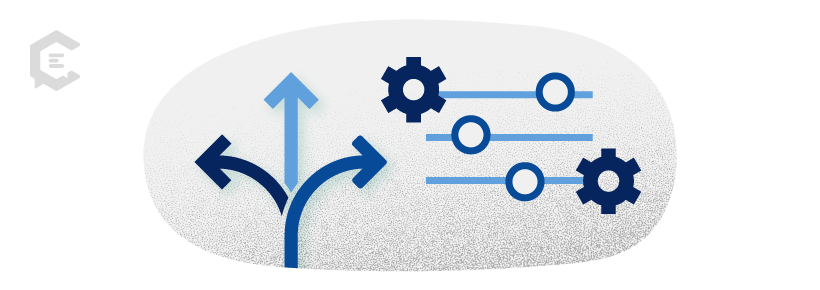Ever heard the saying, ‘If everyone is moving forward together, then success takes care of itself’? Well, Henry Ford was onto something there. Collaboration isn’t just a buzzword; it’s the secret sauce for content success.
Emphasizing the importance of effective content collaboration between marketing clients and content teams may sound redundant, but we think there’s a lot of nuance there worth exploring.
In this article, we’ll cover the importance of client collaboration in content strategy, the most common challenges, and how to foster the best possible collaborative environment for clients to drive smooth execution and success.
The Importance of Client Collaboration in Content Strategy
Great client collaboration ensures content aligns with a client’s specific vision, marketing goals, and target audience. It’s about creating a synergy that amplifies the effectiveness of a client’s content strategy by combining the client’s industry insights and target market understanding with the creative and strategic expertise of the content team.
It’s also a relationship of mutual learning and growth that thrives on open communication. On one side, content creators gain insights into industry-specific knowledge and nuances, which informs and elevates the content they create. On the other side, clients better understand the overall content creation process, which helps them appreciate the effort, complexity, and creativity that goes into each piece of content created for their strategy.
Let’s cover some general benefits quickly:
- Tailored content that drives results: Working closely with clients allows content creators to ensure every piece of content is relevant and accurately aligned with the client’s brand’s voice and messaging. Both aspects are crucial to establishing credibility and trust with the target audience, leading to more impactful results.
- Increased efficiency and productivity: The combination of outsourcing and collaboration often leads to a more streamlined content creation process where you can maximize a content strategy’s impact. Clear communication and shared objectives mean fewer revisions, quicker turnaround times, and more efficient workflows.
- Innovative and creative solutions: Collaboration often breeds innovation. Combining clients’ unique perspectives with content creators’ creative prowess can lead to out-of-the-box ideas and creative solutions that stand out in a crowded content landscape.
- Building stronger relationships: Collaborating closely with clients forges a more trusting connection that can lead to long-term partnerships and opens doors for an expanded or future collaboration.
A ClearVoice Perspective on Client Collaboration
At ClearVoice, we’ve worked with thousands of clients for over a decade. Each collaboration has been unique, but we’ve also developed some consistent best practices that set each collaboration up for success. Let’s get into them.
Embracing client processes and expectations
Often, clients come in with their own reality of what the collaboration process should be like. Because of that, we always start by taking a step back and letting them explain what they’re thinking while we remain open to the expected process. Then, we talk to them about how we think we can best fit into that and whether there should be any adjustments.
For example, if we look at a customer’s vision and know our process fits into 95 percent of that vision, we communicate that to them and see how comfortable they are compromising on that five percent adjustment.
We also like to do a complete audit of all their information. It’s critical to understand their primary KPIs, what they’re measuring, and how they’re measuring it. We also always ask what their budget is. We perform keyword gap analysis, backlink gap analysis, and current content performance reviews. Then, we provide prescriptive content recommendations.
Mapping out the client’s organizational structure
When we work with a client, we always want to see how we fit into the bigger picture. That way, we can create a bigger, cohesive product that aligns with a client’s marketing goals and overall business objectives.
That’s where it’s essential to map out a client’s organization, specifically whoever else is involved in the strategy and what they’re doing (It’s interesting how often that piece of communication isn’t shared from either side). We like to ask:
- What are we doing today?
- Who are we doing it for?
- How can we play a bigger role?
We always encourage our team and clients to be willing and open to this idea. Our ultimate goal is to initiate conversations that deepen our involvement in a client’s endeavors. The more we know about their organizational structure, the more solutions we can offer to support their success.
Establishing effective communication rhythms
In client collaboration, communication is everything (literally every section here could be about communication). We recommend specific meeting cadences based on customer level. It could be once a month, twice a month, or maybe more. It depends on the client.
When it comes to follow-up communications, we like to employ a “less is more” policy. Instead of giving clients all the steps at once, we’ll give them immediate next steps based on the most valuable action items. We’ll say, “Here’s what’s happening next, here’s what we’ll be doing, and here’s what we need from your side.” Then, we’ll get their verbal or written agreement to vocalize what’s at stake and hold ourselves accountable on both sides.
One of the most essential areas communication plays a part is in the “expectations vs. reality” of the production process. From our side, we put a lot of effort into creating detailed visuals that we share with clients to ensure we’re crystal clear on messaging and how we fit into a client’s strategy from a timing and procedures standpoint.
Balancing flexibility with parameters
The best content strategies require both adaptability and structure. We understand the marketing landscape changes quickly, as do a client’s needs and goals. We always ensure our content collaboration is malleable enough to adapt to new marketing trends, audience insights, and client feedback.
But flexibility doesn’t mean a free-for-all. We set clear parameters that outline the scope of that flexibility. It can include:
- Specific deadlines for client inputs
- Predefined timeframes for implementing changes
- Guidelines on how adjustments impact project timelines and deliverables
We’ve found that this approach manages expectations effectively and ensures that any adjustments to the strategy are executed smoothly without compromising the overall quality and objectives of the content. It’s about finding that sweet spot where creativity meets discipline, allowing us to produce dynamic and responsive content while staying consistent and reliable.
Fostering a proactive partnership
Our ideal partnership is when we consistently produce high-quality content that achieves a client’s goals like a well-oiled machine. Those partnerships normally evolve into less frequent communication and more efficient management and monitoring of content creation and strategy.
Ideally, we’re not just responding to clients’ feedback on what’s working and what needs to change. We’re anticipating their need and offering them prescriptive solutions. For example, we can say, “Hey, we’ve been working together for six months, and we’re seeing some needs popping up. Here’s what we’d like to do for you and what it looks like from a budget standpoint.”
The best client collaborations are partnerships committed to continuously evolving and enhancing the content strategy. Both sides stay a step ahead in ensuring the content’s effectiveness and alignment with the client’s overarching objectives.
Encouraging open dialogues on sensitive topics
We mentioned mapping out a client’s organization earlier. Sometimes, it can get a little uncomfortable when you’re doing that and delving into the more intricate aspects of a client’s business. Clients may resist offering intricate details on other partnerships, budgets, or strategic approaches, and a content team may feel uncomfortable asking.
It’s essential for both sides of a collaboration to get comfortable with uncomfortable questions. We aim to position our clients as the rock stars of their company. To do that, we need a holistic understanding of their operations to the best of our ability. There’s power in the vulnerability of sharing organizational structure and information with a partner who can then help clean it up and take care of it.
Bottom line, the more open the dialogue, the more effective and streamlined the collaboration. That level of understanding and trust can transform a standard client-agency relationship into a powerful alliance that drives substantial success.
Bonus: Navigating point of contact transitions
Speaking of communication, one of the most common challenges we’ve encountered is when a client has a point of contact change — the initial point of contact leaves, and there’s a changeover in who we’re talking to. The new point of contact might not understand who we are, how we fit in, and the value we bring.
Our approach in these situations is to reset and establish a new connection. It’s like dating a new person — you must start fresh and build a rapport and understanding. In the client collaboration, that means an intro meeting that’s more of a comprehensive brief. We outline what we’re doing, reopen a conversation around what the client needs, and offer how to contribute further by refining or expanding what we’re currently doing to fit those needs. Take advantage of the opportunity when it happens.
Ready for a Future of Client Collaboration Success?
Open communication and mutual understanding pave the path to successful client collaboration.
If you’re ready to elevate your content creation and strategy with an experienced partner who truly understands the art of collaboration, ClearVoice is here to help. Our expert team is dedicated to creating high-quality content that fits exactly what you need when you need it. Talk to a content strategist today to get started.








